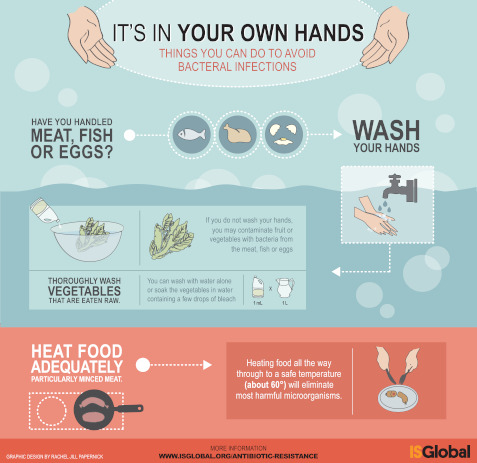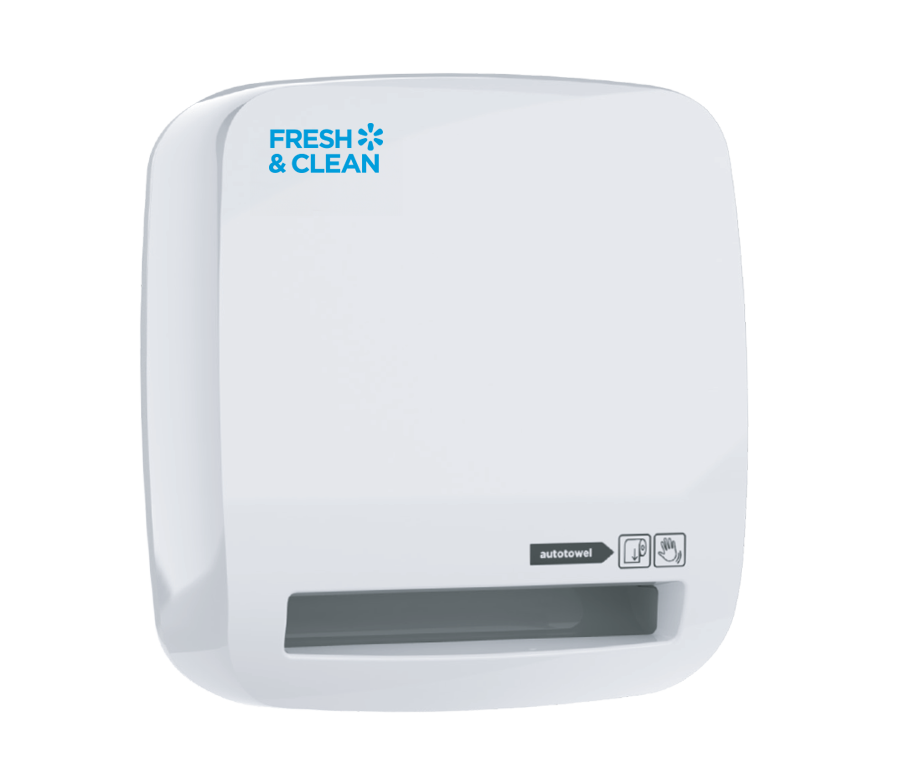
- /
Food businesses have a legal responsibility to ensure the food they’re selling is safely handled. Your end product, the ready-to-eat food needs to be perfectly safe for use.
Hand hygiene is a major game changer here.
That’s exactly why the Australian Food Standards Code legally requires all food service professionals to wash their hands.
Food facilities that neglect hand hygiene compliance risk losing their reputation.
A single food poisoning incident is enough to deplete your resources via lawsuits and even have you hit Chapter 11. So what are you ready to do to avoid the worst possible food business scenario?
It’s far from being easy. But, those who do it right take the following 5 steps to improve hand washing adherence. They:
- Assess risks
- Devise and optimise an effective hand hygiene compliance strategy
- Educate their staff
- Monitor the process
- Apply corrective measures when necessary
But here’s the best part:
An effective compliance strategy is perfectly feasible. If you are a serious business with a serious approach from the top down. And if you allocate sufficient time, staff and resources, you’ll see your adherence rates pick up.
Now, we’ll walk you through the necessary steps to help you create a good strategy and promote effective hand hygiene practices.
Table of Content
- Why is Hand Washing Important in Food Service?
- Make Hand Washing Facilities Accessible to Food Handlers
- Lay in a Good Supply of Washroom Hygiene Consumables
- Provide Continuous Hand Hygiene Training
- Undertake Systematic Hand Hygiene Adherence Monitoring
- Introduce Electronic Hand Wash Surveillance Systems
- Leverage the Power of Visuals to Boost Hand Washing Compliance
Why is Hand Washing Important in Food Service?
Did you know that in all the instances of foodborne illness caused by food mishandling – in 89% workers’ hands are the culprit of contamination?
And what about the fact that human hands harbour 1,500 bacteria per square centimetre? To top this off, food poisoning accounts for a 1.2 billion yearly expenditure to the Australian economy.
Just about enough legitimate reason to approach this issue seriously.
It’s critical to educate your workers on how to wash their hands the right way and when to do it.
You don’t have to try hard to give weight to this critical industry topic, you just give them the facts. Take these harrowing statistics and throw them at your staff along with some more fact-based hygiene information. Put it all in a visual format and get them rooted to the spot. It will work.
Now, back to hand washing compliance strategies.
1. Make Hand Washing Facilities Accessible to Food Handlers
Accessible hand washing facilities are ground zero of any effective hand washing adherence strategy. Besides, this is a legal requirement any food company must follow.
The Food Standards Code requires food companies to install wash stations that are easy to access. This requirement applies to all areas that demand washing hands:
- The entrance and exit points of the food processing area
- Food preparation area
- Area immediately adjacent to the toilets
Furthermore, if you want to achieve complying hand washing facilities, you should:
- Install permanent fixtures
- Supply them with warm potable running water
- Choose large enough stations that allow for effective hand washing
- Use the station exclusively for the purpose of cleaning hands, arms and face
- Fit them out with quality soap and paper towel dispensers or hand dryers
Also, take note of the following. Scientific findings reveal the proximity of washing facilities contribute to increased compliance rates.
A 2006 hand hygiene study in a restaurant setting draws attention to two aspects related to conspicuity and accessibility of hand washing stations:
Appropriate hand washing was positively related to two factors associated with restaurants’ hand sinks: multiple hand sinks and a hand sink in the worker’s sight. These factors contribute to sink accessibility, which likely promotes hand washing.
It’s National #Handwashing Awareness Week! Prioritize handwashing in your establishment this week and learn how accessible #sinks, signage, and training can improve employee hand #hygiene: https://t.co/ijSsXjgnkN pic.twitter.com/lCZSS6rvu4
— FoodQuality&Safety (@FQSmag) December 7, 2018
2. Lay in a Good Supply of Washroom Hygiene Consumables
You won’t see any tangible benefits of hand washing until you direct your efforts to deal with inadequate hand hygiene in your staff washrooms too. And you may wonder why.
Let’s take matters back to the event of food contamination. Foodborne illness most commonly spreads through the faecal-hand-oral route. So to mitigate risks, the following objectives should be on your radar:
- Keeping your washrooms clean and hygienic
- Keeping washroom supplies regularly coming in
Now, here’s a short checklist to help you make informed choices when fitting your washrooms with hand care supplies:
- Ensure that soap dispensers are regularly refilled and always at hand to your staff. No-touch technology dispensers are recommended since they help minimise cross-contamination.
- Keep hand drying facilities always available. Communal towels get soiled almost momentarily in a wet environment. Replace them with disposable paper towels that are a much more hygienic alternative.
Or pick the best of the bunch – the continuous cloth towels. The latest technology that offers maximum germ protection and enables you to go zero waste.
- Install automatic hand sanitiser dispensers in kitchen and washroom areas. Soap and water will eliminate almost all harmful microbes from hands. But hand sanitisers are an additional protection.
They may be the only cleaning method available, in mobile kiosks, for example. Food establishments should use hand sanitisers that are fragrance-free and approved by the National Sanitation Foundation (NSF).
Fresh & Clean is a leading Australian provider of washroom hygiene services. And a NSF certification holder. We provide a reliable supply of washroom hygiene products to tens of thousands of Aussie businesses. And we hit hundreds of thousands globally.
3. Provide Continuous Hand Hygiene Training
It’s critical that your staff adheres to a proper food industry hand washing procedure at every stage of food preparation. Yet a human factor will lead to lowered adherence over time.
It’s an uphill battle to get truly positive results. But you won’t get too far without the WHY of hand washing. And this is critical when you’re coaching your food handlers. The importance of hand washing needs to hit home.
You need to give good reasons for hand washing before food preparation.
Continuous training alongside communicating personal responsibility makes hand hygiene compliance a realistic goal.
It takes sustained effort to promote hand hygiene culture at your workplace. Now, below are a few simple tips to implement into your on-site training for better results:
- Instruct your staff about the risks associated with the spread of harmful germs in food preparation setting.
- Make sure the WHAT, WHY, WHEN and HOW of hand washing really sinks in for your food handlers. Remind them of their responsibilities within your organisation. Get the message across. Make it personal and visual.
- Provide refresher courses to remind your staff of the proper hand washing steps. Revise the 5 instances when they should wash hands while working with food.
- Provide active feedback to your food handlers about their hand hygiene compliance. Share performance data and encourage them to improve.
- Give recognition and acknowledgement to workers that comply and discipline those that underperform.
4. Undertake Systematic Hand Hygiene Adherence Monitoring
Alongside giving proper training and making hygiene convenient you should ensure effective monitoring. You’ll be able to reduce food contamination risk significantly.
Your food service managers should demonstrate a serious establishment-wide approach to hand washing. This is the backbone of a successful hand hygiene promotion program.
Next, make sure your hand hygiene compliance monitoring program includes:
- Tracking baseline hand washing performance by food workers
- Making reports and providing feedback about ineffective practices and opportunities for improvement
- Evaluating promotion results and investigating outbreaks
Now, you might be wondering:
Which hand hygiene monitoring approach gives the best results?
The table below shows the pros and cons of each approach according to the World Health Organization analysis:
- Only way to reliably capture all hand
hygiene opportunities - Details can be observed
- Unforeseen qualitative issues can be
detected while observing hand hygiene - Time consuming
- Skilled and validated observers required
- Prone to observation, observer and selection
bias.
- Inexpensive
- Inexpensive
- Potential negative impact in person-peer
relationship - Reliability and validity required and remains to
be demonstrated
- Inexpensive
- Reflects overall hand hygiene activity
(no selection bias) - Validity may be improved understanding
usage parameters e.g. busy times. - Does not reliably measure the need for hand
hygiene - No information about the appropriate timing of
hand hygiene actions - No possibility to discriminate between
individuals.
- Absence of observer may reduce
observation bias - May potentially produce valuable
detailed information about hand
hygiene behaviour and infectious risks. - Potential ethical issues with tracking of
individual activity - Unknown impact on staff and patient
behaviour - Systems may be costly and failure-prone.
| Monitoring approach | Advantages | Disadvantages |
|---|---|---|
| Direct observation | ||
| Self reporting by workers |
|
|
| Direct observation by peers |
||
| Consmption of hygiene products such as towels, soap and alcohol-based handrub |
||
| Automated monitoring systems |
5. Introduce Electronic Hand Wash Surveillance Systems
Innovative technology offers cutting-edge electronic systems that automate hand hygiene compliance monitoring. They hold great promise in the field of food safety and offer multiple benefits. They:
- Provide continuous monitoring
- Offer real-time compliance feedback
- Facilitate data collection and analysis
- Allow for minimal human resource
If you want to automate the monitoring process at your food service facility, several options are available:
- Wearable ID badges that use beeping alert signal reminders
- Wearable readers that track room entry and exit points
- Non-wearable devices that use motion detection sensors to verify hand washing product usage at entry and exit checkpoints
- Voice recognition based hand hygiene monitoring system that records and tracks compliance
6. Leverage the Power of Visuals to Boost Hand Washing Compliance
The use of visual cues is a driving force in reducing the risk of foodborne illness as a result of poor hand washing in food service facilities.
A growing body of scientific research points at visual methods as most promising when it comes to changing behavioural patterns in workplaces.
A 2014 research studied eye movement patterns during the act of washing hands. The research findings reveal that roughly 95% of the eye fixations were targeting the action of completing an immediate hand washing subtask.
According to the authors’ suggestions, the remainder 5% of eye fixations should be leveraged to unload the conscious effort of transitioning between the subtasks.
Therefore, visual prompts such hand hygiene posters can be used to facilitate the hand washing process and also serve as effective reminders.
Make sure the prompts are conspicuous enough. So, display them at the following strategic points at your food service facility:
- Immediately adjacent to wash stations
- At a prominent place in food preparation areas
- At a clearly visible place in staff washrooms
You can also use visual reminders such as the following list of recommended hand washing instances.

Image from ISGlobal
Now, what’s the bottom line?
A foolproof hand washing compliance strategy isn’t as far-fetched as practice can sometimes lead us to believe. However, you need a bundled approach that involves accessibility, education, monitoring, performance feedback and visual reminders.
We’ve given you strategies that now only wait for implementation. You’re just a few steps away from improved safety for your customers and staff respectively.
And if you’re after superior results, you should rely on professional support. Fresh & Clean is working with businesses across Australia to help them achieve unparalleled hygiene in their workplace.
We leave no stone unturned until we get there. And you get your washrooms handled in the most convenient, hygienic and affordable way.
So, get in touch with us now to find out more about the benefits subscribing to our washroom hygiene services can bring you.
Photo courtesy of Pexels by Valeria Boltneva






